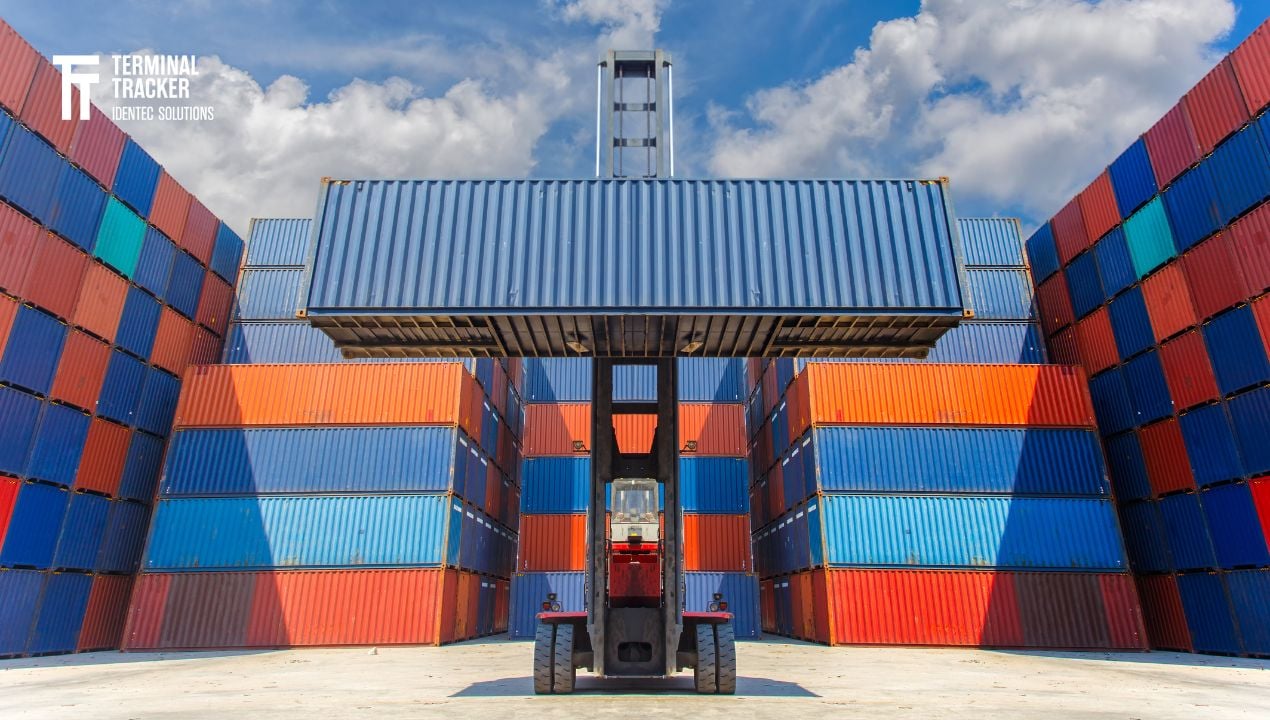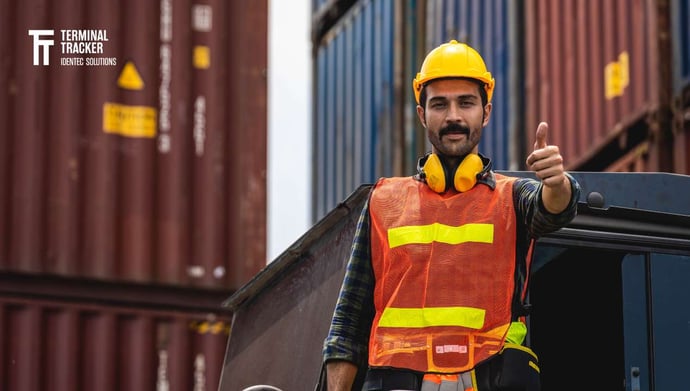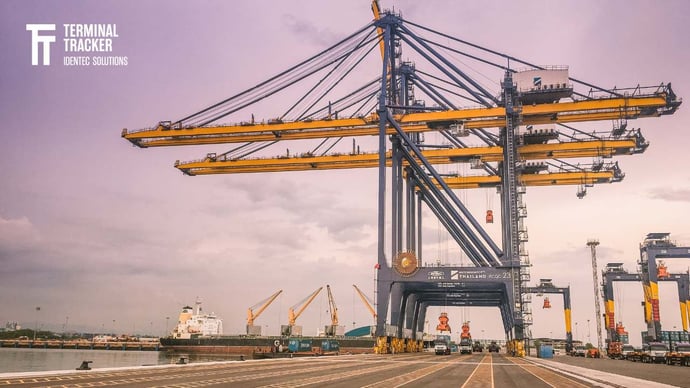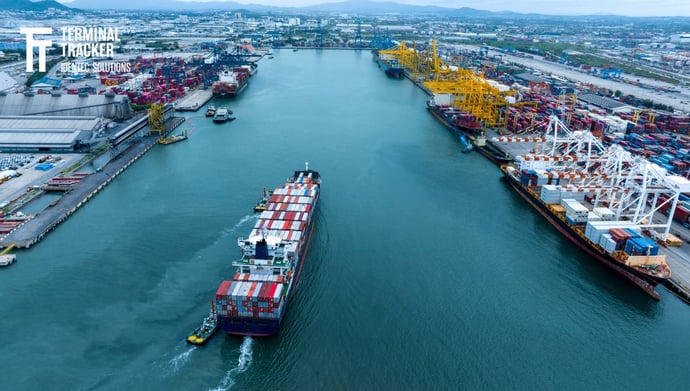Container Handling and Port Automation
| Written by Mark Buzinkay

"With advanced information technologies, reefer container monitoring ensures seamless operations, reduces human error, and helps maintain cargo integrity, building trust and preventing costly disputes."
Joel Reyes, Head of Professional Services Americas
What are Some of the Challenges That Container Terminals Face?
What I wanted to do today is tell you how IDENTECS SOLUTIONS integrates challenges and technologies, focusing in particular on one aspect of the solution that can meet some of the challenges, some of the operational challenges, which we call twist lock control.
So first of all, for any of you that may be unfamiliar with IDENTEC SOLUTIONS - we're a service provider that offers a solution called Terminal Tracker Terminal Tracker has many, many features and Terminal Tracker leverages positioning technology, such as GNSS, RTLS along with RFID technology and in combination with what we call PLC interfaces and software to deliver many functions for our customers. You can call it a modular system that starts at the gate whereby we provide RF tags to the trucks that are then leveraged at the gate to help speed up the transaction to identify the truck driver details and information, which make those transactions go smoother and faster.
That same tag then is used when the truck arrives in the yard and starts communicating with the tags of an RTG, with the tags of the reachstacker or whatever container handling equipment you may have at your terminal to identify that job, to identify what container is laden on that truck and what transaction is there in turn.
What we achieve by doing that is we eliminate the need for the operator to be looking at screens, looking for what job has just shown up to be serviced. We use something called job promotion where we verify that information and we send that job to the top of the list so the guess work is eliminated.
So immediately our customers are seeing benefit because their operations people are not spending time looking to see what container is there, what job it is, they need to select. Once that job is selected, once that container is locked into, and once that container is put in the stack, we leverage the positioning technology along with the PLC interface to identify what position that container has been put in, in the stack, and we update and automatically inform the TOS system of that position. It happens in milliseconds. Thanks to partners like Septentrio. You know who's a trusted partner in the hardware that provides some of the Geo positioning to identify the yard block.
We get the XY coordinates through an interface with the PLC, and we send that information automatically. So, in that case terminals are eliminating manual errors where they're keying in positions incorrectly, avoiding possibly containers being put in the wrong spots in the system and many times eliminating the need for location clerks that need to go back in correct positions. Our customers are getting 100% inventory accuracy.
Along those same lines, we have what we call twist lock control and what twist lock control does is we detect if the operator is not in the correct position in the position that we have planned in that TOS for that container move. We will not allow the twist locks to disengage from the container. In turn, what that does is prevent what are known as illegal moves.
When I first started in this space and offering this solution, I thought it was all about inventory accuracy faster through-put, but as it comes to turn out and that's what I want to talk about today is that this twist lock control is extremely important and I'm going to get into why, which is basically has to do with drug trafficking. In the recent 24 months it has been a very violent period in history, in parts of South America, for example, the Mexican Cartel, Colombian cartel and even Albanian cartel from Europe, from the Balkan region have infiltrated ports and putting container terminal safety in jeopardy.
There's evidence of this activity in in Santos, Brazil, there's evidence of this in Ecuador. Ports are put in the forefront of this war on drugs, if you will. Sometimes the goods make their way into containers before they arrive the terminal. Sometimes the containers are compromised once they're inside of the terminal gated facility. So, it's no secret that, you know, drugs are a big business, $230 billion annually in retail value and that ports are at the forefront of this.
It is on ports to make put forth their best effort to comply with authorities to show entities such as the US government and US customs, that they are complying with regulations, that they are compliant with a partnership called the CPTAP, for instance whereby they must show authorities in the US that they take the necessary measures to take drug trafficking seriously and take security and safety very important, they must comply with certain regulations.
So, for example, in Ecuador, I have been approached in recent years and am looking at twist lock control as a possible tool to be used in the fight against this. What ends up is that operators are compromised, they're asked to move empty containers or sometimes loaded containers, put them in what they call dark corners of the yard, have the containers loaded with drugs, and then those containers end up in the streets in the US and in Europe, and in other markets. It's very important for these smugglers to maintain kind of the stealth, not be seen not be heard, but sometimes workers are caught in the crossfires of this (learn more about the role of a CHE operator).
So, the first thing is they may approach an operator and ask them for a favour, ask them to move a box, and the system without any control, without any positioning technology, without any twist lock control will allow that. And then it's very difficult for the terminal container handling facility to have an audit trail if those containers are later discovered to have some sort of contraband. So, the use of twist lock control kind of engineers that problem out of existence, and the goal there for the customers using this technology in Ecuador is that they may not be approached in the 1st place basically that the system has a control in place that wouldn't allow them to perform these illegal moves (learn more about container handling terminal operations here...).
As I mentioned before, it has been a very violent 24 months for some of these terminals. I have one customer that has experienced 14, directly or indirectly, homicides, murders where people are caught in the crosshairs of this activity. So, for the industry, there are basically two options you may have heard from other seminars from other press releases: The invention or the creation of kind of the smart container that can be equipped with sensors that can detect movements, that can detect the doors opening, that can detect the digital seals, that's one option. But it's very, very expensive because every single unit requires a big investment from the lines.
And the second option is what I described is a positioning that can prevent those illegal moves that can with the use of twist lock control. It won't allow a box to be placed or dropped in an area where it's not planned. Every single physical move that happens in the yard has to match what the virtual plan is in the toss system.
So, it is very critical that's what I wanted to raise awareness of today that it really goes beyond just positioning. Positioning is very important and crucial, of course, but as terminal operators, you have to take a holistic approach and look at the entire ecosystem and determine where is the pain point for such a thing you know. Where is it that you were terminal is having issues and this is certainly one that has been brought to light in recent time in South America and parts of Asia. Very important and very critical as they're in the crosshairs.
Is Workforce Safety an Aspect of Positioning Technology?
Next time you think you're having a difficult day as an operations manager, remember that some of your colleagues in South America, the safety manager, the operations manager, are walking the yard in bulletproof vests because of the situation, because they are seen as the enemy as the person trying to hinder some of these cartels doing what they want to do. November of last year, they have one customer that found 7 kilos inside of a reefer container that was reported to the authorities the next day someone on a motorcycle came and dropped off a bag at the front gate of the facility. It was later discovered that it was a human head, a severed head from a person. So, it’s certainly not going to cure everything. They will find other ways; they always do. Unfortunately, the intelligence and you know the use of submarines, you name it. If you watch the news right, but this is certainly one aspect where they can make it more difficult and force these smugglers an alternative route and potentially make the port less of a target and to leave the port alone and find other ways. So, that's what I wanted to kind of mention today bring to your attention when addressing smart port technology.
If you want to listen to the interview with Julian Galvis, go to our YouTube channel.
FAQ
How can Terminal Tracker adapt to the evolving needs of a growing terminal?
Terminal Tracker has been designed modularly with scalability in mind, making it the perfect solution for growing container terminals. With expansion, container volumes increase, workflows often become more complex, and there is a need for higher levels of automation.
The solution enables seamless integration with existing infrastructure and terminal operating systems (TOS). The flexibility of the system means it can be easily applied to new equipment or adapted to changes in port regulations without the need for a complete overhaul.
How does Terminal Tracker improve environmental sustainability at container terminals?
Terminal Tracker helps terminals' efforts to be more environmentally sustainable by optimising the use of terminal resources and reducing unnecessary energy consumption. The system's real-time tracking capabilities enable terminals to manage their fleets more effectively, ensuring vehicles are deployed precisely as needed, idle time is minimised, and fuel waste is avoided.
Monitoring fleet telematics - such as fuel consumption and tyre pressure - helps identify inefficiencies that may lead to increased emissions or higher energy consumption. With these improvements in operational efficiency, Terminal Tracker helps terminals meet environmental standards and contribute to sustainability goals.
Dive deeper into one of our core topics: Smart Port
Glossary
CTPAT (Customs Trade Partnership Against Terrorism) is a voluntary program by U.S. Customs and Border Protection (CBP) aimed at enhancing supply chain security. It fosters collaboration between CBP and businesses to identify risks, implement security measures, and protect against threats like smuggling and terrorism. Participants benefit from expedited customs processing and reduced inspections, improving trade efficiency. (1)
Global Navigation Satellite System (GNSS) is a network of satellites that provides global positioning, navigation, and timing services. It consists of multiple constellations, including GPS, GLONASS, Galileo, and BeiDou. GNSS satellites broadcast signals containing orbital and timing information, which receivers use to calculate their position through trilateration. GNSS applications span various sectors, including transportation, agriculture, and surveying, offering accuracy within millimeters for location and nanoseconds for timing. (2)
Sources:
(1) Steenken et al. (2004): Container Terminal Operations. Springer.
(2) Teunissen & Montenbruck (2017): Springer Handbook of Global Navigation Satellite Systems. Springer.
Note: This article was updated on the 21st of January 2025

Author
Mark Buzinkay, Head of Marketing
Mark Buzinkay holds a PhD in Virtual Anthropology, a Master in Business Administration (Telecommunications Mgmt), a Master of Science in Information Management and a Master of Arts in History, Sociology and Philosophy. Mark spent most of his professional career developing and creating business ideas - from a marketing, organisational and process point of view. He is fascinated by the digital transformation of industries, especially manufacturing and logistics. Mark writes mainly about Industry 4.0, maritime logistics, process and change management, innovations onshore and offshore, and the digital transformation in general.





